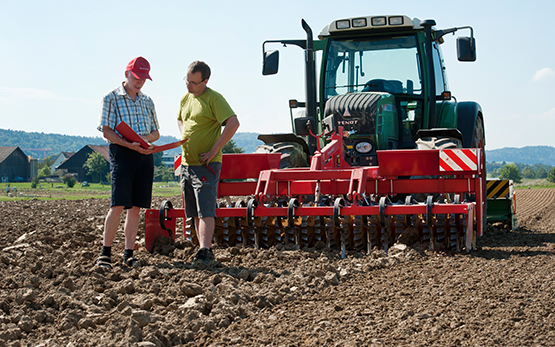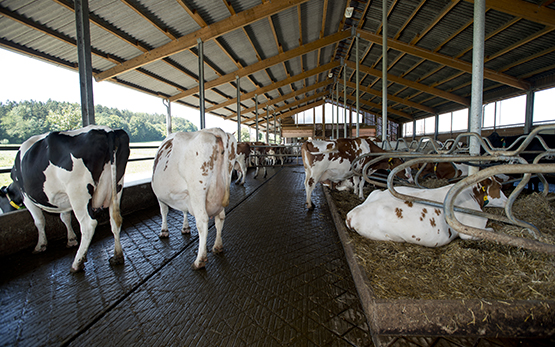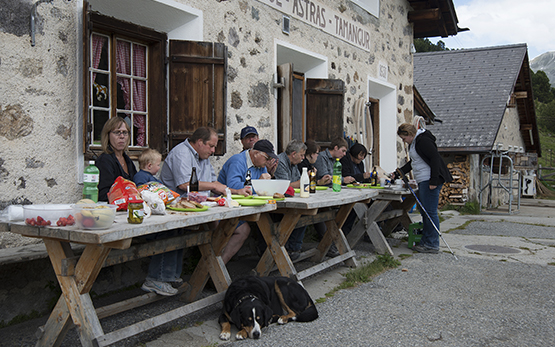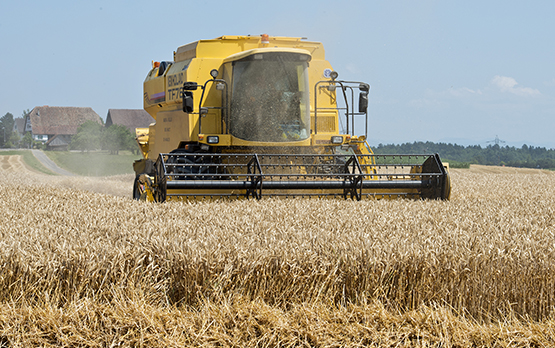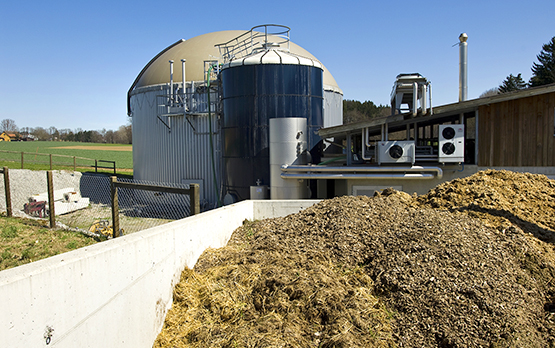Deluz C., Deluz A., Keller T., Doetterl S., Boivin P.
Shrinkage analysis of repacked soil samples enables quantifying the soil's potential physical quality.
Soil Science Society of America Journal, 89, (2), 2025.
Coucheney E., Casali E., Jarvis N., Köstel J.
Air-filled porosity, its connectivity and relation to particulate organic matter in intact soil cores controls carbon emissions near saturation.
Soil and Tillage Research, 248, 2025, Article 106468.
Leuther F., Iseskog D., Keller T., Larsbo M., Pandey B.K., Colombi T.
Root circumnutation reduces mechanical resistance to soil penetration.
Plant, Cell & Environment, 48, (2), 2025, 1608-1620.
Heckova P., Köstel J. K., Klement A., Kodesova R., Snehota M.
Soil structure dynamics in constructed Technosols for bioretention cells: X-ray microtomography study.
Journal of Soils & Sediments, 25, 2025, 591-608.
Princ T., Köstel J., Snehota M.
How wetting and drainage cycles and wetting angle affect capillary air trapping and hydraulic conductivity: A pore network modeling of experiments on sand.
Water, 16, (21), 2024, Article 3103.
Marešová P., Köstel J., Klement A., Kodešová R., Sněhota M.
A dataset of µCT images of small samples of constructed technosol from bioretention cells.
Data in Brief, 57, 2024, Article 111066.
Colombi T., Pandey B. K., Chawade A., Bennett M. J., Mooney S. J., Keller T.
Root plasticity versus elasticity: When are responses acclimative?
Trends in Plant Science, 29, (8), 2024, 856-864.
Torres L. C., Nemes A., ten Damme L., Keller T.
Current limitations and future research needs for predicting soil precompression stress: A synthesis of available data.
Soil and Tillage Research, 244, 2024, 1-13.
Fukumasu J., Jarvis N., Köstel J. K., Larsbo M.
Links between soil pore structure, water flow and solute transport in the topsoil of an arable field: Does soil organic carbon matter?
Geoderma, 449, 2024, 1-11.
Weber T., Weihermüller L., Nemes A., Bechtold B., Degré A., Diamantopoulos E., Fatichi S., Filipovic V., Gupta S., Hohenbrink T., Hirmas D., Jackisch C., De Jong Van Lier Q., Köstel J. K., Lehmann P. and others
Hydro-pedotransfer functions: A roadmap for future development.
Hydrology and Earth System Sciences, 28, (14), 2024, 3391-3433.
Romero Ruiz A., O'Leary D., Daly E., Tuohy P., Milne A., Coleman K., Whitmore A. P.
An agrogeophysical modelling framework for the detection of soil compaction spatial variability due to grazing using field‐scale electromagnetic induction data.
Soil Use and Management, 40, (2), 2024, 1-16.
Romero Ruiz A., O'Leary D., Keller T.
Agrogeophysical modelling of managed grasslands.
In: Agriculture and geophysics: Illuminating the subsurface. 1 February, Zürich. 2024, 1.
Ten Damme L., Calleja-Huerta A., Munkholm L.J., Schjønning P., Keller T., Lamandé M.
Traction modifies the contact area and the vertical and horizontal stress distributions beneath the tyre.
Soil and Tillage Research, 244, 2024, 1-9.
Martínez I., Stettler M., Lorenz M., Brunotte J., Weisskopf P., Sommer M., Keller T.
Immediate effects of wheeling with agricultural machinery on topsoil gas transport properties and their anisotropy.
Soil and Tillage Research, 241, 2024, 1-6.
Arrázola-Vásquez E., Larsbo M., Capowiez Y., Taylor A., Herrmann A., Keller T.
Estimating energy costs of earthworm burrowing using calorimetry.
European Journal of Soil Biology, 121, 2024, 1-9.
Casali E., Larsbo M., Köstel J. K., Jarvis N.
Macropore flow in relation to the geometry and topology of soil macropore networks: Re-visiting the kinematic wave equation.
Journal of Hydrology, 630, 2024, 1-9.
Garland G., Köstel J. K., Johannes A., Heller O., Doetterl S., Or D., Keller T.
Perspectives on the misconception of levitating soil aggregates.
Soil, 10, 2024, 23-31.
Schlüter S., Köstel J. K.
Soil Structure.
In: Encyclopedia of soils in the environment, Volume 5. Second Edition, Publ. Academic Press 2023, Elsevier. 2023, 1-7.
Larsbo M., Köstel J. K., Krab E., Klaminder J.
Quantifying earthworm soil ingestion from changes in vertical bulk density profiles.
European Journal of Soil Biology, 120, 2023, 1-9.
Schwenk A., Larsbo M., Jarvis N., Köstel J. K.
Three-dimensional X-ray imaging of macropore flow.
Geoderma, 440, 2023, 1-18.
de Lima R. P., Rolim M. M., Torres L. C., Cavalieri-Polizeli K. V. M., Keller T.
Modelagem da compactação do solo induzida pelo tráfego agrícola.
In: Tópicos em Ciência do Solo. Band 12, Publ. Sociedade Brasileira de Ciência do Solo. 2023.
Romero Ruiz A., Rivero M. J., Milne A., Morgan S., Meo Filho P., Pulley S., Segura C., Harris P., Lee M. R. F., Coleman K., Cardenas L., Whitmore A. P.
Grazing livestock move by Lévy walks: Implications for soil health and environment.
Journal of Environmental Management, 345, 2023, 1-13.
Blanchy G., Albrecht L., Bragato G., Garré S., Jarvis N., Köstel J. K.
Impacts of soil management and climate on saturated and near-saturated hydraulic conductivity: Analyses of the Open Tension-disk Infiltrometer Meta-database (OTIM).
Hydrology and Earth System Sciences, 27, (14), 2023, 2703-2724.
Schjønning P., Lamandé M., De Pue J., Cornelis W. M., Labouriau R., Keller T.
The challenge in estimating soil compressive strength for use in risk assessment of soil compaction in field traffic.
Advances in Agronomy, 178, 2023, 61-105.
Keller T., Karlen D. L., Hallett P. D.
Soil tilth.
In: Encyclopedia of Soils in the Environment. 2nd edition, Elsevier. 2023, 48-56.
Johannes A., Kellermann L. A., Weisskopf P.
Weiterentwicklung der Spatenproben-Methoden BodenDok, VESS2020 und SpadeSubVESS in der Schweiz.
Agrarforschung Schweiz, 14, 2023, 197-206.
other Languages:
french
Nazari M., Arthur E., Lamandé M., Keller T., Bilyera N., Bickel S.
A meta-analysis of soil susceptibility to machinery-induced compaction in forest ecosystems across global climatic zones.
Current Forestry Reports, 9, 2023, 370-381.
Tschanz P., Köstel J. K., Volpe V., Albrecht M., Keller T.
Morphology and temporal evolution of ground-nesting bee burrows created by solitary and social species quantified through X-ray imaging.
Geoderma, 438, 2023, 1-13.
Bahrami M., Naderi-Boldaji M., Ghanbarian D., Keller T.
Discrete element modelling of stress propagation in soil under a rigid wheel in a soil bin: A simulation of probe inducing stress deviation and wheel speed.
Biosystems Engineering, 230, 2023, 159-170.
van den Akker J.J.H., ten Damme L., Lamandé M., Keller T.
Compaction.
In: Encyclopedia of Soils in the Environment. 2nd Edition, Elsevier. 2023, 85-99.
Johannes A., Weisskop P., Boivin P., Boizard H.
Spade-SubVESS Visual Evaluation of Subsoil Structure with a Spade.
Agroscope. 2023, 2 pp.
other Languages:
german | french
Blanchy G., Albrecht L., Köstel J. K., Garré S.
Potential of natural language processing for metadata extraction from environmental scientific publications.
Soil, 9, (1), 2023, 155-168.
Klaminder J., Krab E., Larsbo M., Jonsson H., Fransson J., Köstel J. K.
Holes in the tundra: Invasive earthworms alter soil structure and moisture in tundra soils.
Science of the Total Environment, 859, (Part 2), 2023, 1-8.
Keller T., Lamandé M., Naderi-Boldaij M., de Lima R.P.
Soil compaction due to agricultural field traffic: An overview of current knowledge and techniques for compaction quantification and mapping.
In: Advances in Understanding Soil Degradation. Springer. 2022, 287-312.
Colombi T., Keller T.
Effects of high soil density on soil functions and crop growth.
In: Soil Constraints to Crop Production. Cambridge Scholar Publishing. 2022, 38-61.
Arrázola-Vásquez E.M., Larsbo M., Capowiez Y., Taylor A., Sandin M., Iseskog D., Keller T.
Earthworm burrowing modes and rates depend on earthworm species and soil mechanical resistance.
Applied Soil Ecology, 178, 2022, Article 104568.
Hosseinpour-Ashenaabad R., Keller T., Larsbo M., Hallett P.D.
Dual-platform micromechanical characterization of soils: Oscillation shear rheometry and spherical indentation.
Soil & Tillage Research, 223, 2022, Article 105467.
Bahrami M., Naderi-Boldaji M., Ghanbrian D., Keller T.
Simulation of soil stress under plate sinkage loading: A comparison of finite element and discrete element methods.
Soil & Tillage Research, 223, 2022, Article 105463.
Köstel J. K., Fukumasu J., Larsbo M., Herrmann A., Ariyathilaka P., Magdysyuk O., Burca G.
Potential of combined neutron and X-ray imaging to quantify local carbon contents in soil.
European Journal of Soil Science, 73, (1), 2022, 1-19.
Fukumasu J., Jarvis N., Köstel J. K., Kätterer T., Larsbo M.
Relations between soil organic carbon content and the pore size distribution for an arable topsoil with large variations in soil properties.
European Journal of Soil Science, 73, (1), 2022, 1-15.
Keller T., Or D.
Farm vehicles approaching weights of sauropods exceed safe mechanical limits for soil functioning.
Proceedings of the National Academy of Sciences of the United States of America, 119, (21), 2022, 1-6.
Barbosa L.A.P., Gerke K.M., Munkholm L.J., Keller T., Gerke H.H.
Discrete element modelling of aggregate shape and internal structure effects on Weibull distribution of tensile strength.
Soil & Tillage Research, 219, 2022, 105341.
Parvin N., Coucheney E., Gren I.-M., Andersson H., Elofsson K., Jarvis N., Keller T.
On the relationships between the size of agricultural machinery, soil quality and net revenues for farmers and society.
Soil Security, 6, 2022, 100044.
Romero-Ruiz A., Linde N., Baron L., Breitenstein D., Keller T., Or D.
Lasting effects of soil compaction on soil water regime confirmed by geoelectrical monitoring.
Water Resources Research, 58, 2022, e2021WR030696.
Weiss L., Lutz S. , Keller T., Weisskopf P.
Physikalische Bodeneigenschaften: Recherche zum Stand der Technik zu Bestimmungsmethoden und zu Geräten.
Kompetenzzentrum Boden. KOBO-Bericht Nr. 1, 2021, 87 pp.


